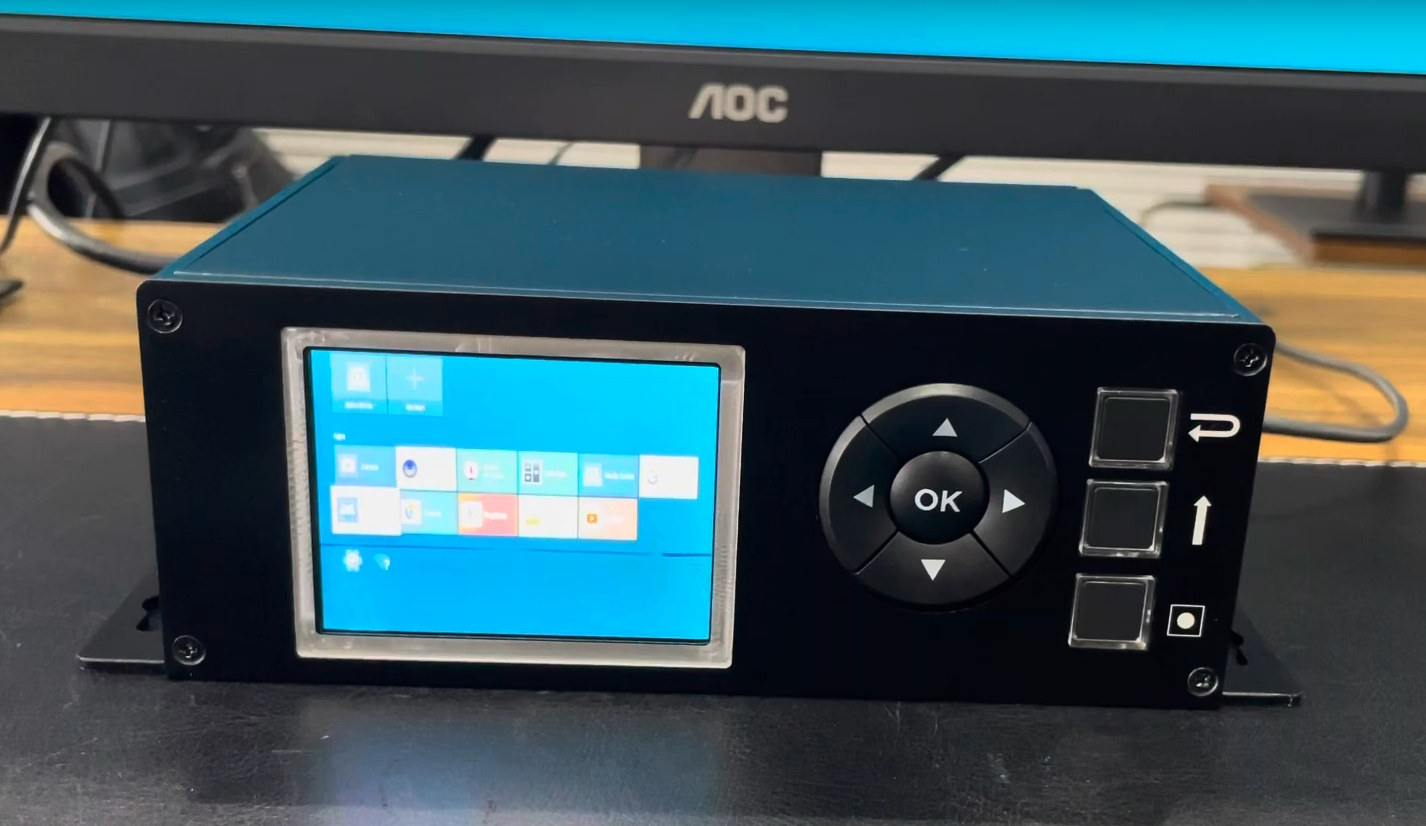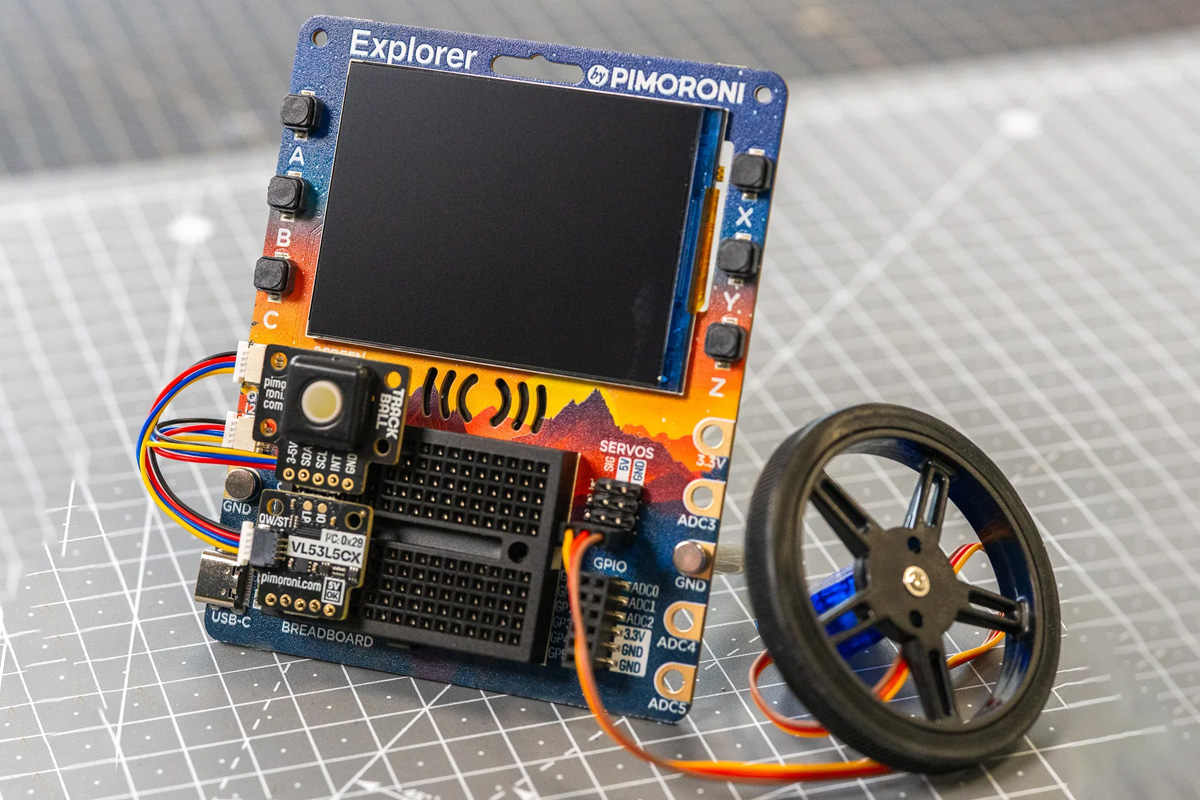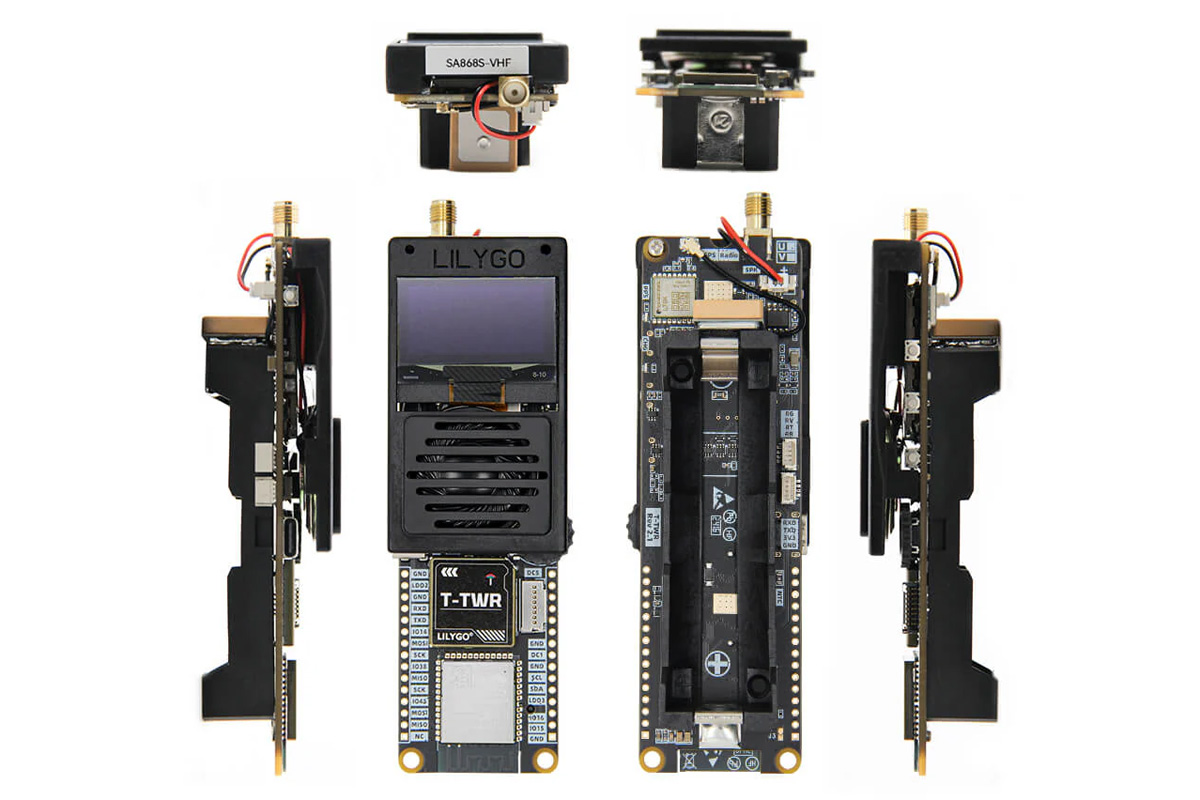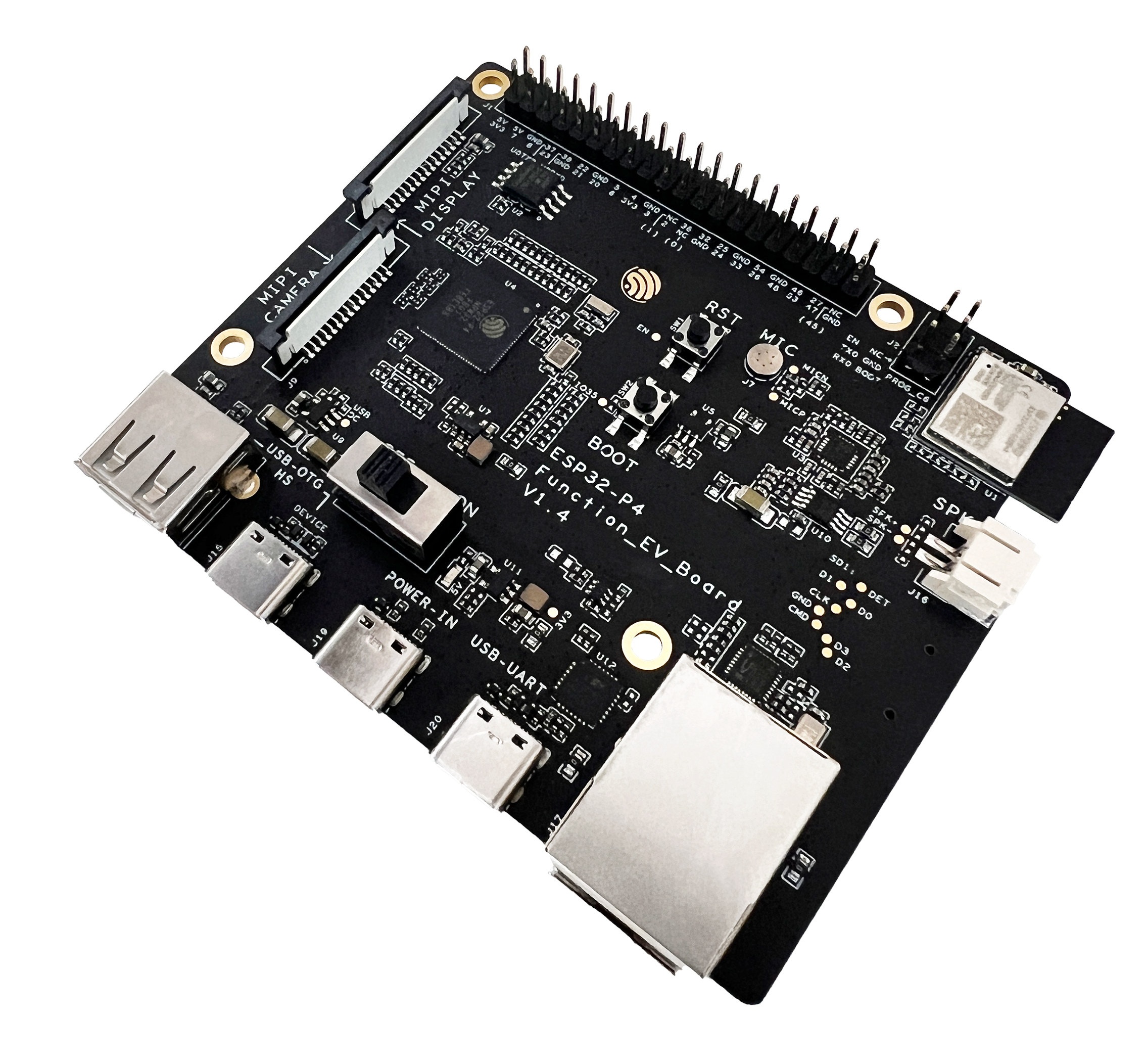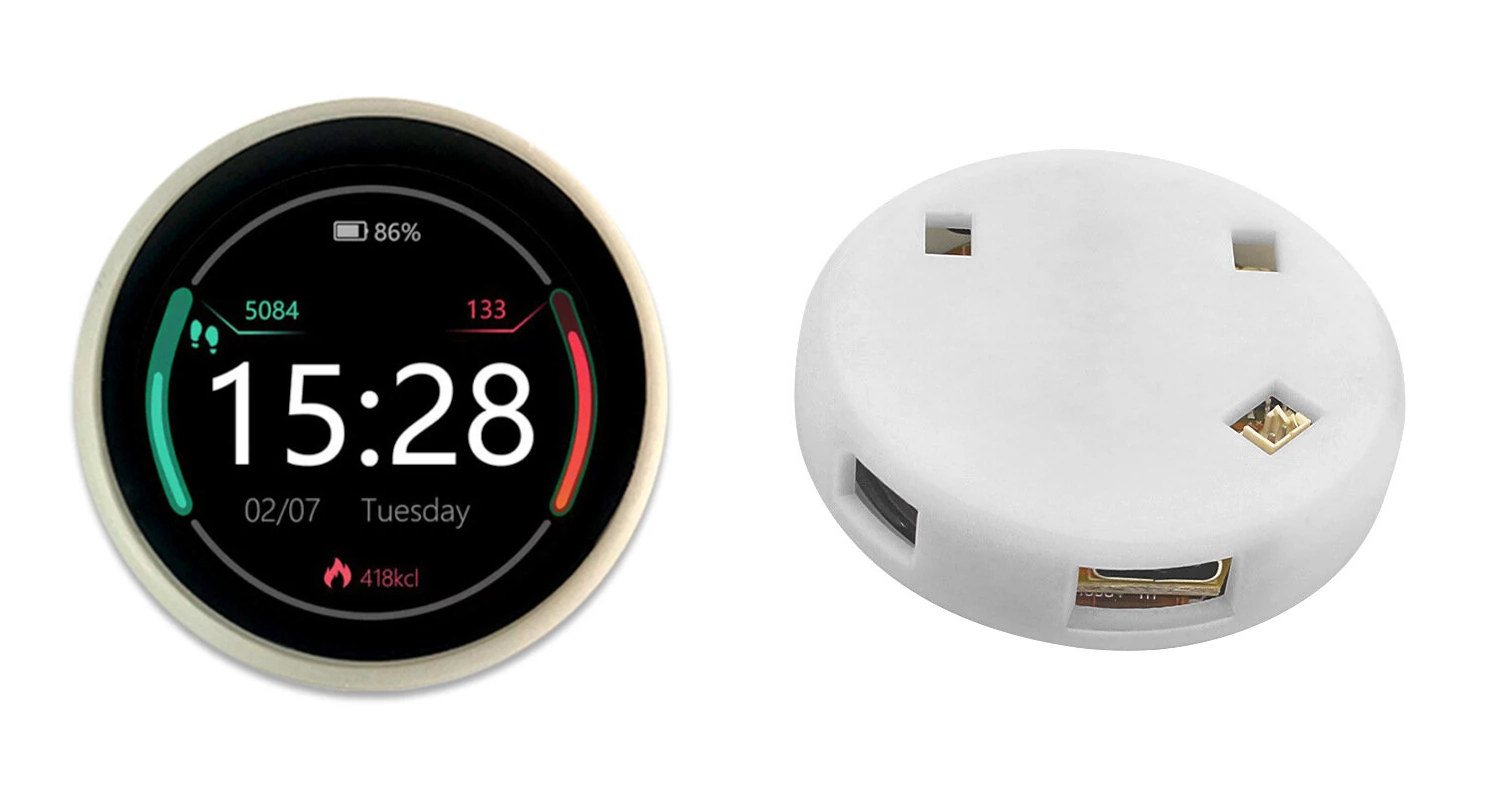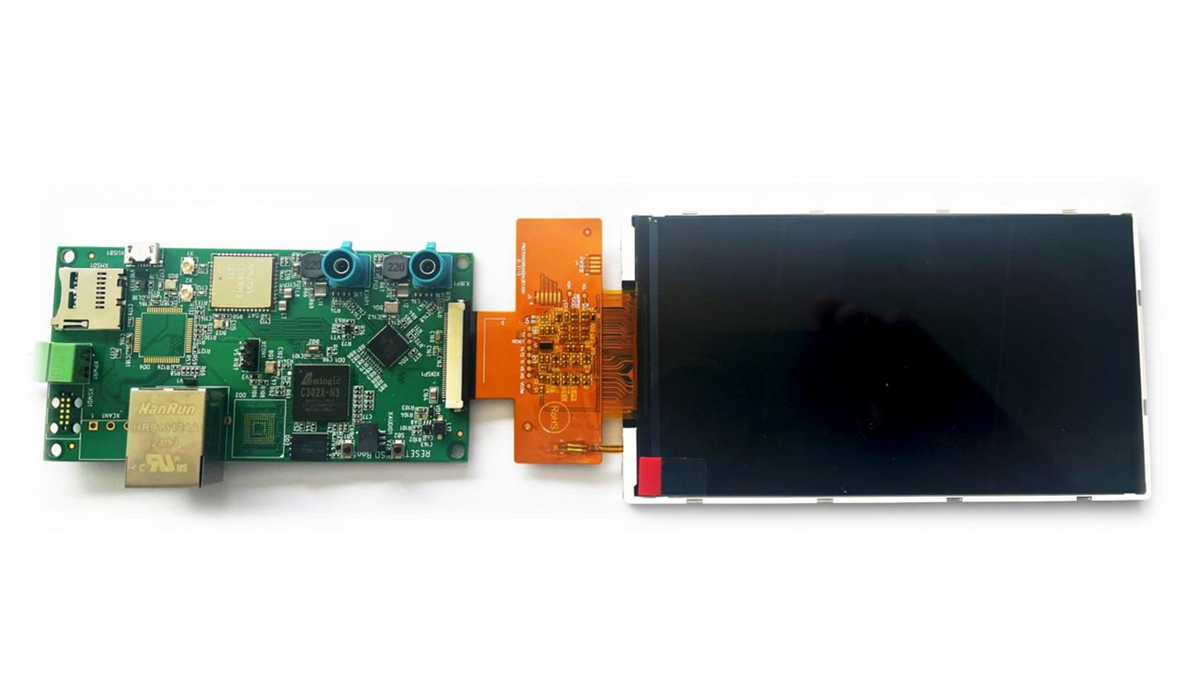Mekotronics R58-4×4 3S is another Rockchip RK3588-based Arm PC and digital signage player from the company with unusual features such as a 3-inch display on the front panel as well as four HDMI inputs supporting up to 4Kp60 sources. The embedded PC features up to 16GB RAM and 128GB eMMC flash, an M.2 PCIe socket for NVMe storage, an 8Kp60-capable HDMI 2.1 video output port, gigabit Ethernet and WiFi 6 connectivity, a mini PCIe socket and NanoSIM card slot for a 4G LTE/GPS module, and more. Mekotronics R58-4×4 3S specifications: SoC – Rockchip RK3588 octa-core processor with CPU – 4x CortexA76 cores @ up to 2.4 GHz, 4x CortexA55 core @ 1.8 GHz GPU – Arm Mali-G610 MP4 GPU with support for OpenGL ES 1.1/2.0/3.2, OpenCL 2.2, Vulkan 1.2 Video decoder – 8Kp60 H.265, VP9, AVS2, 8Kp30 H.264 AVC/MVC, 4Kp60 AV1, 1080p60 MPEG-2/-1, VC-1, VP8 Video encoder – 8Kp30 H.265/H.264 […]
NanoPi M6 – A Rockchip RK3588S SBC and fanless HMI solution with an integrated 3.5-inch touchscreen display
NanoPi M6 is a Rockchip RK3588S SBC (single board computer) that is also offered as a complete fanless HMI solution with a metal case and a 3.5-inch capacitive touchscreen display with 800×480 resolution. The M6 is offered with 4GB to 32GB LPDDR5 memory, supports microSD, eMMC flash module, and M.2 NVMe SSD bootable storage, features one HDMI 2.1 port, two MIPI DSI connectors, two MIPI CSI camera connectors, gigabit Ethernet, an M.2 E-Key socket for WiFi and Bluetooth, and a 30-pin GPIO header for expansion among a few other ports and features. NanoPi M6 specifications: SoC – Rockchip RK3588S CPU – Octa-core processor with 4x Cortex-A76 cores @ up to 2.4 GHz, 4x Cortex-A55 cores @ up to 1.8 GHz GPU – Arm Mali-G610 MP4 GPU compatible with OpenGL ES 3.2, OpenCL 2.2, and Vulkan 1.2 APIs VPU – 8Kp60 video decoder for H.265/AVS2/VP9/H.264/AV1 codecs, 8Kp30 H.265/H.264 video encoder AI […]
Pimoroni Explorer board is a Raspberry Pi RP2350-based learning platform with 2.8-inch LCD, breadboard sensors and more
The Pimoroni Explorer board is an electronic prototyping board built around the Raspberry Pi RP2350 chip with a 2.8-inch LCD screen, a speaker connector, and various I/Os, which makes it easy to build circuits, prototype projects, and even make small robots. It also features a mini breadboard, tactile buttons, and crocodile clip terminals, making it suitable for both beginners and experienced makers. The RP2350 MCU was recently released by Raspberry Pi Limited along with the $5 Raspberry Pi Pico 2 board. Since that initial release, we have seen many RP2350-based development boards like the Cytron MOTION 2350 Pro, the Bus Pirate 5XL and 6, and many other development boards released, feel free to check those out if you are looking for development boards built around the RP2350 MCU. Pimoroni Explorer board specifications Microcontroller – Raspberry Pi RP2350B MCU CPU Dual-core Arm Cortex-M33 @150MHz with Arm Trustzone for secure boot Dual-core 32-bit […]
LILYGO T-TWR REV2.1 is an ESP32 walkie-talkie board with display, GNSS, and SA868 module
LILYGO has recently introduced an updated version of their T-TWR ESP32 walkie-talkie development board, the T-TWR REV2.1. This new board not only features Wi-Fi and Bluetooth but also has a GPS module for added functionality. Additionally, it has a new RF front-end matching circuit that can be configured to work with both VHF and UHF frequencies. The board is very versatile and can be programmed with Arduino IDE for various applications. The main difference between the older T-TWR and the newer T-TWR REV2.1 is that the new module has better power management with the AXP2102 single-cell Li-battery PWM charger, allowing it to use USB, a 21700 battery, or an 18650 battery, while the original T-TWR only supports USB and an 18650 battery. The new version also includes a GNSS module along with a microphone-switching matrix and a speaker-switching matrix for better sound quality. Additionally, the REV2.1 has the Push-To-Talk button […]
ESP32-P4-Function-EV-Board development board launched for $55 with 7-inch display and camera module
Espressif Systems “ESP32-P4-Function-EV-Board” – the official ESP32-P4 development board – is now available in limited quantities on Espressif’s AliExpress store for $55.44, and some other AliExpress stores at a premium as part of a kit with a 7-inch touchscreen display and a 2MP camera module. First unveiled in January 2023, the ESP32-P4 is the first general-purpose RISC-V microcontroller from Espressif Systems without any wireless connectivity. It’s a high-end microcontroller with two RISC-V cores clocked at 400 MHz, vector instructions for AI acceleration, a 2D graphics accelerator for smooth graphical user interfaces, and H.264 video encoding support. There’s been some buzz about it in recent months, and finally, it’s now possible to purchase an ESP32-P4 board for evaluation and software development. ESP32-P4-Function-EV-Board development board specifications: Microcontroller – Espressif Systems ESP32-P4 CPU Dual-core RISC-V HP (High-performance) CPU @ up to 400 MHz with AI instructions extension and single-precision FPU, 768KB of on-chip […]
Arduino and LVGL-compatible ESP32-C3 board features a 1.28-inch round touchscreen display fully housed in a case
The ESP32-2424S012 is an ESP32-C3 WiFi and BLE development board with a 1.28-inch round touchscreen color display that is fully housed in a black or white plastic enclosure and suitable for Arduino and LVGL library. As we’ll see further below some have also used it with Tasmota and ESPHome firmware. We previously covered several tiny ESP32-S3/ESP32-C3 boards with a round display such as the LILYGO T-RGB ESP32-S3 board, Makerfabs “ESP32-S3 Round SPI TFT with Touch 1.28″, SB Components’ Dual Roundy, but they either don’t come with a case at all, or only the front is covered, but the bottom is laid bare. The ESP32-2424S012 is quite similar, but it can be purchased with a case that covers both the front and back with some openings for expansion connectors. ESP32-2424S012 board specifications: Wireless module – Espressif Systems ESP32-C3-MINI-1U module SoC – ESP32-C3 RISC-V microcontroller @ 160 MHz with 400 KB SRAM, 2.4 […]
Amlogic C302X embedded AI camera kit features GMSL2 connectors, Ethernet, WiFi, BLE, and CAN Bus interface
The DAB Embedded CAMKIT-AML302-IMX462, is a compact AI camera kit built around the Amlogic C302X processor with 256MB DDR3 on-chip (SiP) and designed for image processing and machine learning applications. The board also includes GMSL2 interfaces that add support for a range of Sony camera sensors, including global shutter and 3D options. Additionally, it has 100Mbit LAN, Wi-Fi, BLE, and CAN bus connectivity which makes this board useful for various computer vision applications. Previously we have written about similar camera kits including the Pivistation 5, the OpenCV AI Kit Lite, the e-con Systems 360° Camera Kit, and much more Feel free to check those out if you are interested in the topic. DAB Embedded CAMKIT-AML302-IMX462 specifications Processor – Amlogic C302X CPU – Dual Core ARM Cortex-A35 2 TOPS Neural Processing Unit (NPU) OpenCV (Hardware Accelerator) Video Encoder – H.264/H.265/JPEG ISP – High-performance, up to 5MP with HDR System Memory – 256MB […]
Seeed Studio Wio Tracker 1110 Dev Kit supports Meshtastic for off-grid communication
The Seeed Studio Wio Tracker 1110 is a dev kit designed to work with the Meshtastic network. The board is built around a Nordic nRF52840 multiprotocol Bluetooth 5.4 SoC and uses the Semtech LR1110 LoRa transceiver for communication. Seeed Studio is selling the Wio Tracker 1110 development board in a bundle with an OLED display and a GNSS receiver, providing everything needed to start experimentation for peer-to-peer LoRa mesh networking. Meshtastic is a free, open-source, decentralized mesh network that uses LoRa radios to establish a low-power, long-range, off-grid communication system in areas without reliable infrastructure. Driven entirely by the community, Meshtastic enables decentralized, encrypted communication without the need for a dedicated router or phone. Previously we have written various versions of the Wio Tracker including the Wio GPS and Wio LTE GPS Tracker. Since Meshtastic projects are becoming popular among developers and enthusiasts, we will likely see many more dev […]


